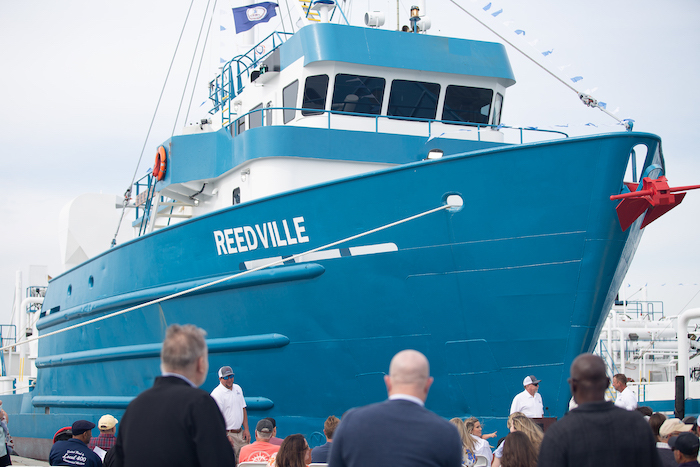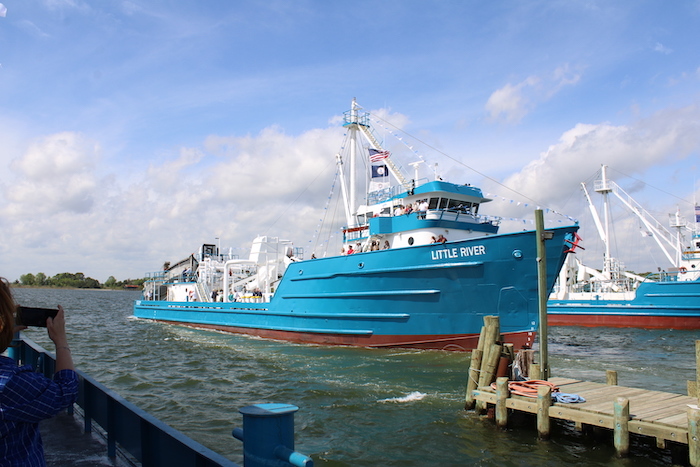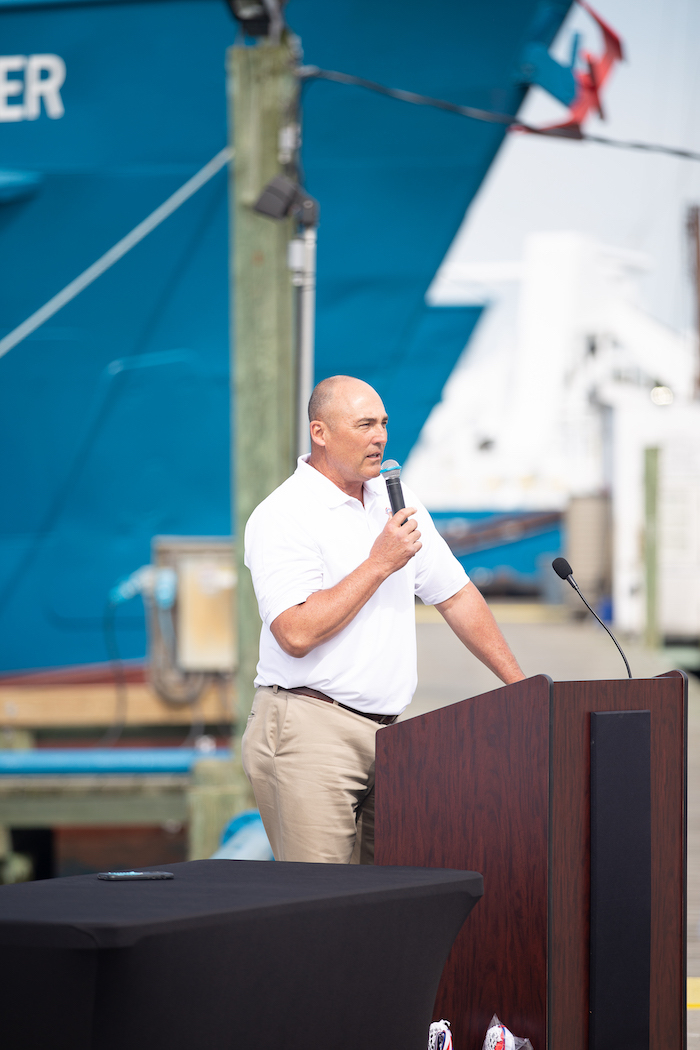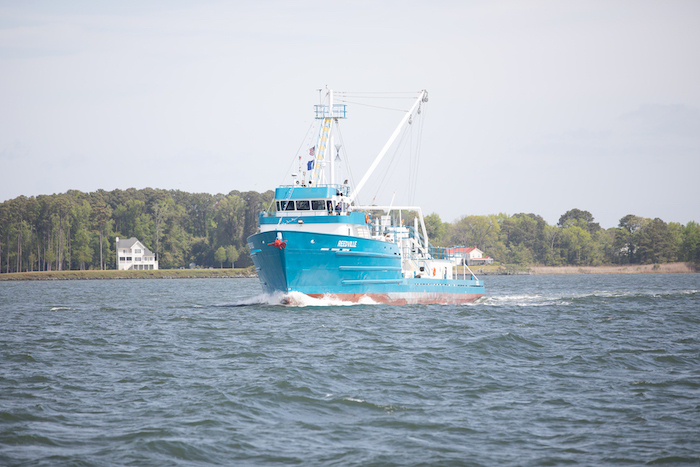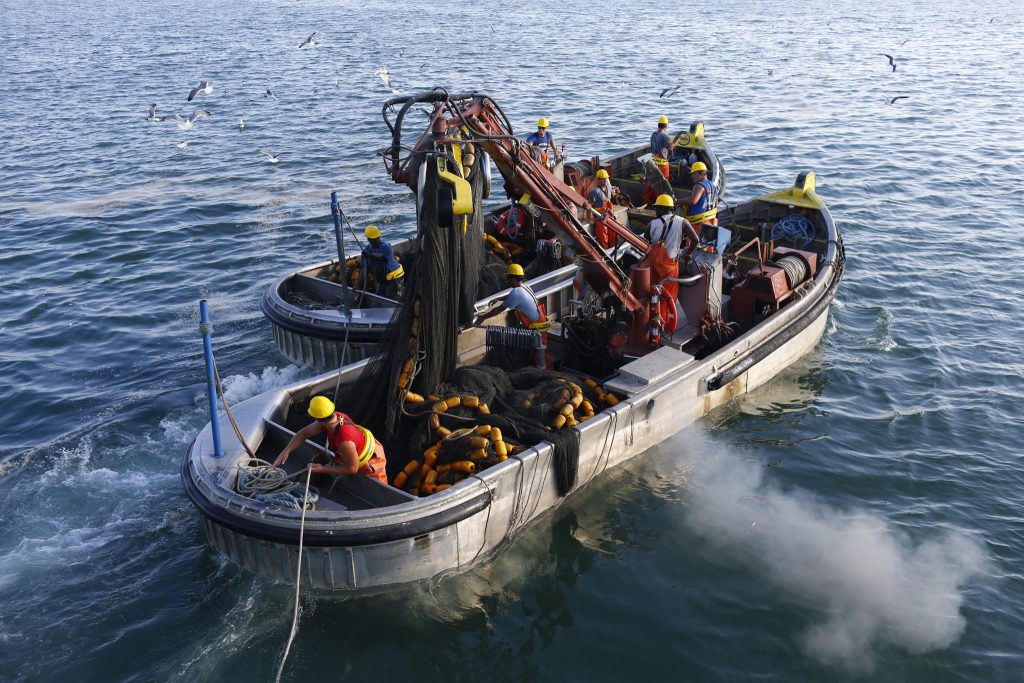May 7, 2023 — The following was released by Omega Protein:
Ocean Harvesters, Omega Protein’s fishing partner, kicked off the 2023 fishing season by christening two new vessels for the Atlantic menhaden fishery. The F/V Reedville and the F/V Little River are the two latest additions to the fleet of Ocean Harvesters, which fishes for menhaden in Virginia and operates a long-term supply contract with Omega Protein.
The vessels were christened on Saturday April 22 in a ceremony at Omega Protein’s facility in Reedville, Virginia. Kathy Deihl, Kelly Walker, Kristy Hall and Faye Hall, all long-time members of the local fishing community with ties to Omega Protein, served as sponsors of the vessels and assisted in breaking the ceremonial champagne bottles over their hulls. Hannah Long, the environmental manager for the Reedville plant, served as master of ceremonies, with remarks given by members of the Ocean Harvesters team.
“This is a symbol of continued investment,” said Monty Deihl, the CEO of Ocean Harvesters, as part of his opening remarks. “It’s not just [an investment] in the plant and in the vessel fleet, but it’s also an investment in the people here and the community of Reedville, and those people who are dependent on this business to support their families.”
Both the Reedville and the Little River previously served in the Gulf of Mexico as supply ships for the offshore oil industry, before being acquired and refitted by the Omega Shipyard in Moss Point, Mississippi. Reedville was originally built in 1982, and will mark its first fishing season this year. Little River, built in 1977, began its new career fishing in 2020, but was officially christened this season after delays due to Covid.
Reedville and Little River are names with storied histories in the fishery. Both names were previously bestowed on a pair of older, long-serving fishing vessels, which were converted from World War II service boats and then went on to work for decades catching menhaden.
“As a 3rd generation employee in the menhaden fishing industry, I am pleased to see this multimillion-dollar investment in the future of our business,” said Andy Hall, General Manager of Reedville Operations for Ocean Harvesters. “It represents Ocean Harvesters’ continuing commitment to provide our employees with the best, safest, and most state-of-the-art menhaden fishing vessels in the world. My hope is that the Reedville and Little River will fulfill their destinies of support to the local communities for decades to come, much like the original Reedville and Little River.”

